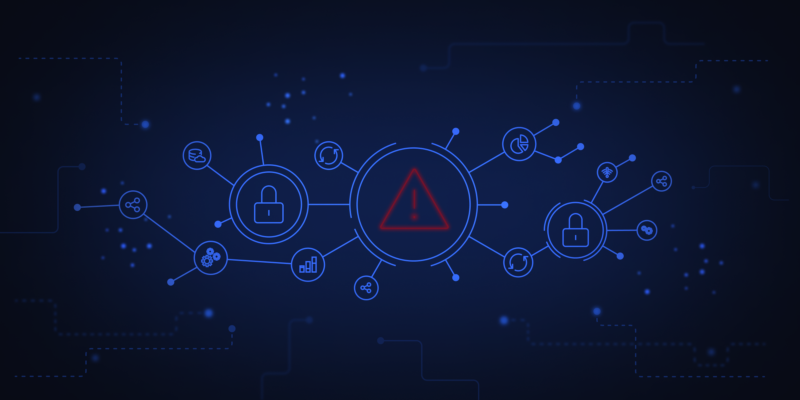
The Impact of Security Misconfigurations on Data Breach Incidents
As technology becomes more complex, the need for strong cybersecurity measures has never been more critical. Statistics speak for themselves – according to the 2023 Annual Data Breach Report, the world has seen a 78 percent increase in 2023 in data compromises compared to the previous year. The reasons can be different – from human mistakes and ransomware to security misconfigurations. The latest, presumably minor oversights or errors in system settings, have emerged as a critical vulnerability, frequently serving as the key to unauthorized access and catastrophic data breaches. And that’s what we are going to talk about this time…
What are security misconfigurations?
In modern software development and operational environments, security misconfigurations stand out as significant vulnerabilities that can unintentionally expose systems and applications to serious risks. These misconfigurations occur when an IT environment’s security settings – whether a system, application, or network device – are incorrectly configured, either due to oversight, a lack of knowledge, or the complexity of the technology involved. The result is a gap in the defense mechanisms that protect sensitive data and resources, allowing cyber threats to infiltrate and exploit, leading to severe consequences, including unauthorized access to your critical data, service disruptions, data breaches, data loss, and compliance violations.
Let’s have a look at the roots of misconfigurations…
So, what should you pay attention to when it comes to misconfigurations? The genesis of security misconfigurations can be traced back to several factors. So, let’s look at them…
Default settings left unchanged
Systems and applications deployed with default settings may not prioritize security, creating vulnerabilities if these settings are not customized for the organization’s specific security requirements.
Something like that happened to Microsoft’s Power App users some time ago when their sensitive data was exposed as a result of default security settings. This oversight meant that sensitive data stored in Power Apps could be accessed publicly unless explicit permissions were configured to restrict access, therefore these organizations were unaware that their data was exposed due to these default settings. Hence, you should always remember to review and customize default security settings to prevent data exposure.
Excessive permissions
Assigning more access rights than necessary can allow unauthorized manipulation or access to sensitive data. This oversight contradicts the principle of least privilege, which seeks to minimize access rights to the lowest level necessary.
Consider the following example of the risks associated with excessive permissions: a former employee used broad access rights to abuse customer data, causing major reputational damage. This highlights the importance of implementing role-based access control, which assigns user privileges based on their role within an organization. Furthermore, performing regular audits of user privileges guarantees that access rights are properly aligned with the principle of least privilege, to reduce unnecessary exposure of sensitive information. These measures help to protect against data breaches and unauthorized access.
Outdated software
Operating systems, applications, and dependencies that lack the latest security patches are vulnerable to exploitation based on known vulnerabilities.
Organizations should implement an effective patch management program that involves regularly monitoring for available patches and updates. Furthermore, it is important to use scanning tools to detect vulnerabilities, which can help organizations protect their systems against potential threats.
Unnecessary features
Features or services that are not required for the operation of a system but are enabled can unnecessarily increase its attack surface. These include unused network ports, remote administration tools, or file-sharing services, and, when not required for the operation of a system but left enabled, they provide additional entry points for attackers. Regular reviews and disabling or removal of such non-essential features help reduce potential entry points for attackers. Moreover, implementing the principle of least functionality guarantees the company uses only the minimum set of features and services required for the organization’s specific work.
Insecure API configurations
As organizations increasingly integrate their systems with external services through APIs, guaranteeing these interfaces are securely configured is crucial. Inadequate security measures for APIs can lead to data leaks and unauthorized access.
Use Cases: T-Mobile’s cloud infrastructure misconfiguration leads to 30M+ customer data leak
If you still think that misconfigurations can’t lead to data breaches, then why not look at the real case? In January 2023 T-Mobile experienced a data breach that impacted over 30 million customers due to a misconfiguration in their cloud infrastructure. This incident, caused by an improperly secured S3 bucket, underscores the critical importance of proper configuration measures in mitigating the impact of such breaches.
Best practices to avoid security misconfigurations
So, what do to protect your data? Of course, attentiveness to details while configuring new tools and apps is important. However, there are other security measures that you can take to secure your data.
Strong access management controls
Implement strict access controls based on the principle of least privilege. Regular audits and adjustments guarantee that users access only what they need, which minimizes potential damage from breaches.
Zero-trust architecture
Adopt a zero-trust framework – treat all access requests as potential threats until verified. This approach significantly reduces the risk of internal and external breaches.
Secure application architecture
Design your software with security at its core, and use methods such as network segmentation to protect sensitive data. A secure architectural foundation reduces vulnerabilities from the start.
Software maintenance
Consistently update and patch software to close off vulnerabilities. This routine maintenance is a defense line against attacks that exploit outdated systems.
Custom code review
Conduct thorough reviews of custom code, using automated tools and manual inspection to identify security flaws before deployment. This helps to guarantee that custom applications do not introduce new vulnerabilities.
Cloud storage permissions review
Regularly evaluate and refine cloud storage settings to enforce the principle of least privilege. Properly configured permissions and encryption protect sensitive data from unauthorized access.
Deployment of security tools
Make use of advanced monitoring and detection tools, like IDPS and SIEM, to identify and respond to threats promptly. These tools are important for understanding and mitigating potential security incidents.
Minimal platform use
Simplify your IT environment by disabling unnecessary features and services. A streamlined setup reduces the attack surface and focuses security efforts on key components.
Structured development cycle
Add security practices into every stage of the software development lifecycle. By including security from the planning phase through deployment you can be sure applications are resilient against attacks.
Repeatable hardening process
Create a standardized hardening process for all systems and applications. If you automate this process where possible it will result in consistency and reduce the likelihood of misconfigurations.
Regular backups
Prioritize regular backups of critical data. This step guarantees business continuity as it allows for rapid data restore in the event of a breach or data loss, which minimizes operational downtime.
Multi-factor authentication (MFA)
Strengthen access security by implementing MFA. This adds a layer of defense, to protect against unauthorized access even if credentials are compromised.
Takeaway
Well, it becomes clear that addressing security misconfigurations is not merely a technical challenge but a critical component of an organization’s overall security posture. It’s critical for an organization to develop mechanisms that will help them address any possible threat, eliminating data loss.
Before you go:
✍️ Subscribe to GitProtect DevSecOps X-Ray Newsletter and always stay up-to-date with the latest DevOps andDevSecOps insights
🔎 Read our blog post on top reasons why it’s worth starting to back up DevOps tools
📅 Schedule a live custom demo and learn more about GitProtect backups for your DevOps data protection
📌 Or try GitProtect backups for your DevOps tools to eliminate data loss and ensure business continuity of your organization






